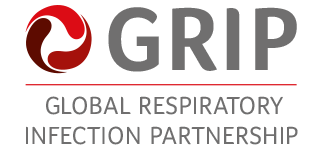Past, present & future
Since 1900, the combination of water chlorination and the introduction of both antibiotics and vaccinations have dramatically decreased the number of deaths from infectious diseases, thereby also increasing life expectancy, said Prof Alike van der Velden, Assistant Professor, University Medical Center Utrecht, Netherlands.
However, as Fleming acknowledged in his Nobel Prize acceptance speech: “The time may come when penicillin can be bought by anyone in the shops. There is the danger that the ignorant man may easily under-dose, making microbes resistant.” Fleming was proven correct. Of the antibiotics introduced after 1970, the first resistant bacteria were found within months of their introduction.
Displaying EU data on the yearly defined daily dose per 1000 inhabitants per day in 2002, Prof van der Velden showed that France ranks highest and the Netherlands lowest for antibiotic usage. The same trend in antibiotic use across the EU is still observed in recent surveillance data and directly correlates with the level of AMR found in these countries.
Despite the comparatively low use of
antibiotics in the Netherlands, there is
still considerable room for
improvement.
Analysis of recent data
from nearly 3,000 patient consultations
with primary care physicians revealed that
the majority of patients did not receive
an antibiotic prescription. However, of
the patients who did receive an
antibiotic, it appeared that 46% of these
prescriptions were not according to the
treatment guidelines.
A more in-depth analysis of these consultations revealed that over-prescription was highest for patients presenting with sore throat and lower RTI, particularly when the GP thought that the patient wanted an antibiotic.
Prof van der Velden focused on the policy change needed by local professional organisations and national governments. In the Netherlands, the establishment of Hospital A-Teams have helped optimise antibiotic policy in secondary care. Composed of at least one internist infectious disease specialist, a medical microbiologist, a hospital pharmacist and a specialized nurse, the team collaborates with the Infection Prevention and Control teams and the Antibiotic Surveillance team and are compensated through financial and/or time for the extra work they do for the hospital. Their specific tasks include ensuring last line antibiotics are restricted to specific patients in the hospital, monitoring guideline compliance, initiating projects towards better antibiotic policy, training hospital staff and personnel, processing ideas that come back from personnel and facilitating the tracking of AMR and antibiotic usage data. A year after their establishment, it was shown that appropriate antibiotic use increased from 46% to 77%.
Clear and regularly updated primary care guidelines, developed and endorsed by the Dutch College of General Practitioners, also enhance prudent use of antibiotics.
To date, a trial endorsing these guidelines and providing specialized prescribing feedback, showed overall antibiotic use had decreased by 7.6% in the practices that participated. Furthermore, prescriptions for patients with RTI also became more targeted, and both overprescription and under-prescription decreased.
